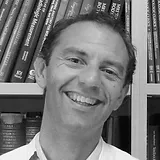
Walter Noordzij
dr.
In my profession as a nuclear medicine physician, I’m involved in both clinical and scientific applications of nuclear medicine and radiology modalities. My main interests include haematology, general oncology, radio-immunotherapy, and especially the implementation of new therapeutic strategies. Currently, I have a special interest in imaging post-transplant lymphoproliferative disease, as well as radio-immunotherapy in chemotherapy refractory (non)-Hodgkin’s lymphoma.
Ultrashort Oncologic Whole-Body [18F]FDG Patlak Imaging Using LAFOV PET.
Published in: Journal of nuclear medicine : official publication, Society of Nuclear Medicine
Access to document
10.2967/jnumed.124.267784
Methods to shorten [ 18F]FDG Patlak PET imaging procedures ranging from 65-90 to 20-30 min after injection, using a population-averaged input function (PIF) scaled to patient-specific image-derived input function (IDIF) values, were recently evaluated. The aim of the present study was to explore the feasibility of ultrashort 10-min [ 18F]FDG Patlak imaging at 55-65 min after injection using a PIF combined with direct Patlak reconstructions to provide reliable quantitative accuracy of lung tumor uptake, compared with a full-duration 65-min acquisition using an IDIF. Methods: Patients underwent a 65-min dynamic PET...
Clinical Performance Comparison of a Long Versus a Short Axial Field-of-View PET/CT Using EARL-Compliant Reconstructions
Published in: Molecular Imaging and Biology
Access to document
10.1007/s11307-024-01939-5
document
PURPOSE: To ensure comparable PET/CT image quality between or within centres, clinical inter-system performance comparisons following European Association of Nuclear Medicine Research Ltd. (EARL) guidelines is required. In this work the performance of the long axial field-of-view Biograph Vision Quadra is compared to its predecessor, the short axial field-of-view Biograph Vision. PROCEDURES: To this aim, patients with suspected tumour lesions received a single weight-based (3 MBq/kg) 2-deoxy-2-[ 18F]fluoro-D-glucose injection and underwent routine clinical ( ∼ 15 min) scans on the Vision and 3-min scans on the Quadra in...
Impact of patient motion on parametric PET imaging
Published in: European Journal of Nuclear Medicine and Molecular Imaging
Access to document
10.1007/s00259-024-06599-9
document
Alessia Artesani, Joyce van Sluis, Johannes H van Snick, Laura Providência, Walter Noordzij, Charalampos Tsoumpas
The pattern of local recurrence after prostatectomy on PSMA PET/CT-scan
Published in: Tijdschrift voor Urologie
Access to document
10.1007/s13629-024-00424-6
document
This study aimed to describe the local recurrence (LR) pattern in post-prostatectomy prostate cancer patients using PSMA PET/CT scans. We retrospectively collected 103 PSMA PET/CT scans from patients with suspected LR across nine medical centres. Anonymized scans underwent review by an expert nuclear medicine physician. After review, on 83 PSMA PET/CT scans, 93 lesions were identified as a LR. The predominant LR location (56%) was found within 2 cm cranial to the penile bulb. Additionally, 24 LR (26%) were observed > 2 cm cranial to the penile bulb and caudal to the top of the...
Floor H.E. Staal, Walter Noordzij, Jorinde Janssen, Daniëla E. Oprea-Lager, Antoine M. Engelen, Evert J. van Limbergen, Robert Jan Smeenk, Marianne A.A. de Jong, Tom C.G. Budiharto, Inge Jacobs, M. A.Dorien Haverkort, Charlotte L. Brouwer, Kelvin Ng Wei Siang, Johannes A. Langendijk, J. Fred Verzijlbergen, Igle Jan de Jong, Shafak Aluwini
Reading room assistants to reduce workload and interruptions of radiology residents during on-call hours: Initial evaluation
Published in: European Journal of Radiology
Access to document
10.1016/j.ejrad.2024.111381
document
PURPOSE: To determine how much timesaving and reduction of interruptions reading room assistants can provide by taking over non-image interpretation tasks (NITs) from radiology residents during on-call hours. METHODS: Reading room assistants are medical students who were trained to take over NITs from radiology residents (e.g. answering telephone calls, administrative tasks and logistics) to reduce residents’ workload during on-call hours. Reading room assistants’ and residents’ activities were tracked during 6 weekend dayshifts in a tertiary care academic center (with more than 2.5 million inhabitants in its catchment area)...
